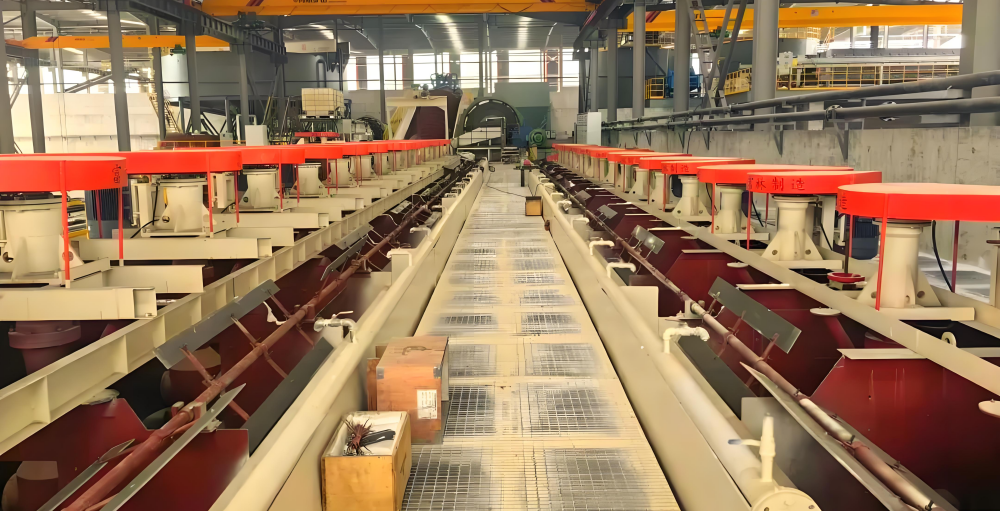Flotation, also known as froth flotation, is a mineral processing technique that separates valuable minerals from gangue minerals at the gas-liquid-solid interface by leveraging differences in the surface properties of different minerals. It is also referred to as “interfacial separation.” Any process that directly or indirectly utilizes phase interfaces to separate mineral particles based on differences in their interfacial properties is termed flotation.
Mineral surface properties refer to the physical and chemical characteristics of mineral particle surfaces, such as surface wettability, surface electrical properties, types of chemical bonds on the surface atoms, saturation, and reactivity. Different mineral particles exhibit distinct surface properties, and by leveraging these differences with the aid of phase interfaces, mineral separation and enrichment can be achieved. Therefore, the flotation process involves the interaction of gas, liquid, and solid phases at the interface.
Mineral surface properties can be altered through artificial intervention to amplify the differences between valuable minerals and gangue minerals, thereby facilitating their separation. In flotation, flotation reagents are commonly used to artificially modify mineral surface properties, enhance differences between minerals, and increase or decrease the hydrophobicity of mineral surfaces. This allows for the adjustment and control of mineral flotation behavior to achieve better separation results. Consequently, the application and development of flotation technology are closely tied to the use of flotation reagents.
Unlike physical parameters such as density and magnetic susceptibility, which are difficult to alter, the surface properties of mineral particles can be readily manipulated through human intervention to create differences that meet separation requirements. As a result, flotation is widely applied in mineral separation and is often called the “universal mineral processing method.” It is particularly effective and extensively used for the separation of fine and ultra-fine particles, making it one of the most versatile and efficient techniques in mineral processing.
Post time: Aug-25-2025


